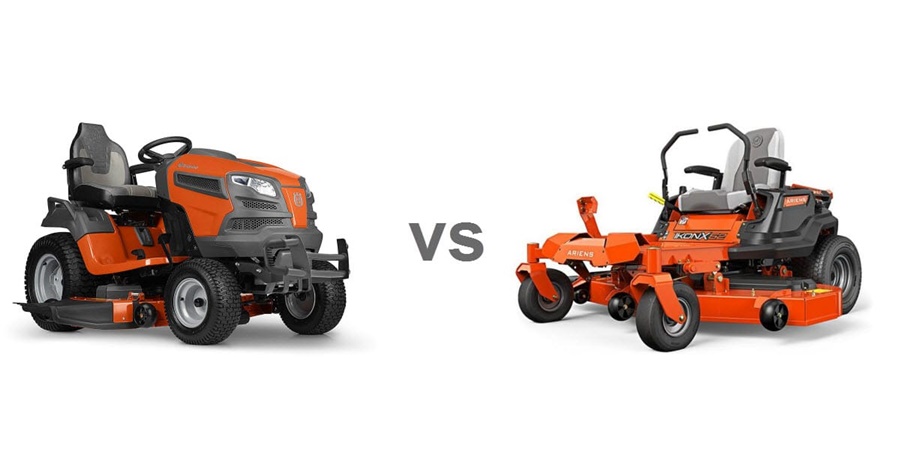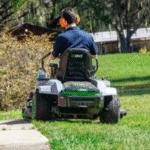When it comes to maintaining a large lawn, investing in a powerful and efficient mower is key. Two of the most popular options on the market are riding mowers and zero-turn mowers. While both offer great mowing capabilities, each has its unique strengths and is better suited to specific needs. This article breaks down the differences, pros, and cons of each to help you make an informed decision.
What Is a Riding Mower?
A riding mower, also known as a lawn tractor, is a type of mower that allows the operator to sit and steer using a traditional steering wheel. These mowers are often designed for residential use and can handle a variety of mowing tasks on medium to large lawns.
Key Features:
- Steering wheel control
- Front-mounted engine
- Typically wider turning radius
- Suitable for hills and uneven terrain
- Can be used with various attachments (e.g., snow blowers, carts)
What Is a Zero-Turn Mower?
A zero-turn mower is a high-performance machine designed for speed and precision. It uses dual hydrostatic transmissions controlled by lap bars (or occasionally a steering wheel) to achieve a turning radius of virtually zero, allowing for extremely sharp turns and high maneuverability.
Key Features:
- Dual-handle steering (lap bars)
- Rear-mounted engine
- Zero-degree turning radius
- Excellent maneuverability around obstacles
- Typically faster mowing speeds
Comparison: Riding Mower vs Zero-Turn Mower
1. Maneuverability
- Riding Mower: Has a wider turning radius and is less agile around trees, flower beds, or other obstacles.
- Zero-Turn Mower: Highly maneuverable, perfect for lawns with many obstacles or intricate landscaping.
Winner: Zero-Turn Mower
2. Ease of Use
- Riding Mower: Feels more like driving a car; great for users who prefer familiar steering wheel operation.
- Zero-Turn Mower: May take time to master lap bars; not ideal for complete beginners.
Winner: Riding Mower
3. Speed and Efficiency
- Riding Mower: Slower mowing speed and may require extra passes due to wider turning radius.
- Zero-Turn Mower: Faster and more efficient, reducing mowing time by up to 50% for large or complex lawns.
Winner: Zero-Turn Mower
4. Terrain Handling
- Riding Mower: Better suited for uneven, sloped, or hilly terrains due to its lower center of gravity and stable traction.
- Zero-Turn Mower: Performs best on flat terrain; can be unstable or less safe on steep slopes.
Winner: Riding Mower
5. Cost
- Riding Mower: Typically less expensive upfront; better for smaller budgets.
- Zero-Turn Mower: More costly, especially high-end commercial models.
Winner: Riding Mower (for budget-conscious buyers)
6. Attachments and Versatility
- Riding Mower: Can use a variety of attachments (e.g., aerators, snow blades, dump carts).
- Zero-Turn Mower: Limited attachment compatibility, mostly focused on mowing.
Winner: Riding Mower
Pros and Cons
Riding Mower
Pros:
- Easier to operate for beginners
- Handles slopes well
- Lower cost
- Versatile with attachments
Cons:
- Less maneuverable
- Slower mowing times
- Larger turning radius
Zero-Turn Mower
Pros:
- Superior maneuverability
- Fast and efficient mowing
- Professional-grade cutting performance
- Ideal for complex lawn layouts
Cons:
- Learning curve for lap bar control
- Higher cost
- Not ideal for hills or uneven terrain
- Limited use beyond mowing
Which One Should You Choose?
Choose a Riding Mower if:
- Your lawn is hilly or uneven
- You’re new to mowing and want easy controls
- You need attachments for multiple yard tasks
- You’re on a tighter budget
Choose a Zero-Turn Mower if:
- Your lawn is flat and open with many obstacles
- You want to mow large areas quickly
- You prefer precise control and professional-quality cuts
- You’re comfortable learning new controls
Conclusion
Both riding mowers and zero-turn mowers are excellent tools, but the best choice depends on your lawn’s layout, your budget, and how you plan to use the machine. If you prioritize comfort and versatility, a riding mower is likely your best bet. If speed and maneuverability are most important, go with a zero-turn mower.








Leave a Reply